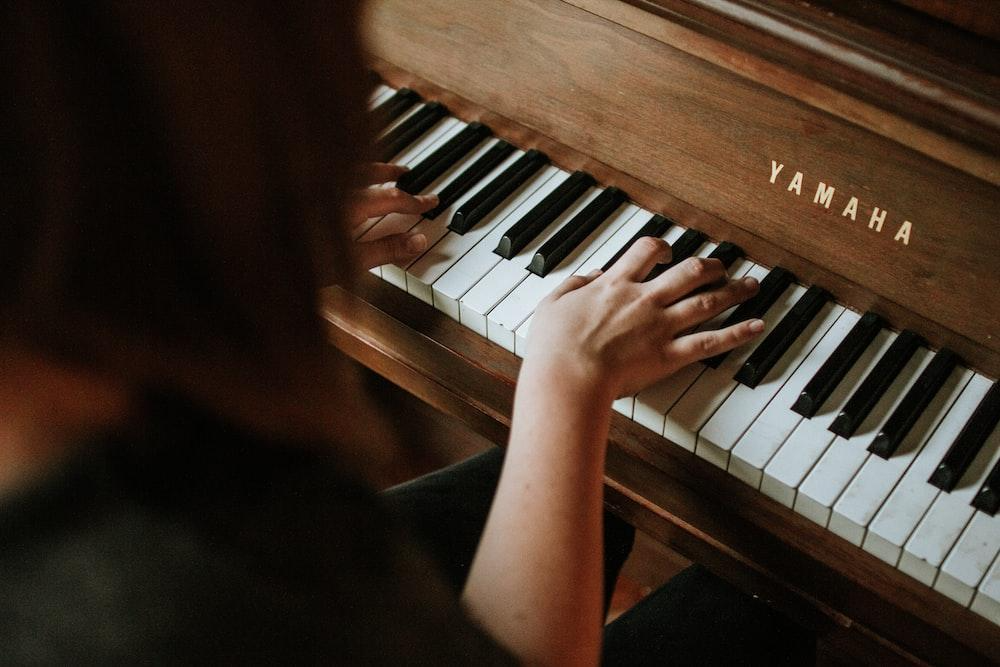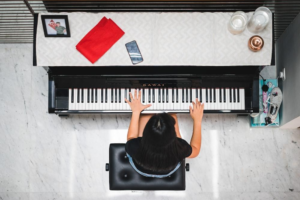Entertainment
How To Choose the Best Piano for Yourself ?

It’s only human to act on instinct! However, deciding to learn the piano is not something to be taken lightly. You shouldn’t just walk into the store, buy the first appealing piano, and walk out. Before you can make a selection of the greatest piano, you should acquire as much information as possible.
Consider this: Learning to play the piano or any musical instrument aids in self-expression, creative problem-solving, confidence building, and enhancing concentration, focus, hand-eye coordination, memory, and reading ability.
This article will teach you the factors to consider while picking the best piano for yourself.
1. The Sound
Before purchasing a piano, try it out to see if you like the sound. Notably, you can learn to play piano on iPad, which would help you understand how the sound keys are arranged. Significantly, this is a personal preference; some prefer a mellower tone, while others prefer a brighter tone. A nice piano tone is generally round and rich. You can also seek the advice of a professional, preferably an experienced music instructor or a qualified piano technician.
Take note of how consistent the piano’s tone is. Are the keys’ volumes consistent? Play all of the piano’s notes with the same vigor, then listen for any unexpected changes in volume. Is the sound quality consistent as well? Look for tones that are noticeably brighter or mellower than the others.
2. Consider Spacing
Get the exact dimensions of the piano and the specified location where you intend to place it. If the room is limited, you may have to pick between a spinet and a regular upright piano, the first being the smaller of the two.
It is also critical to select a proper location for your piano. Acoustic pianos are susceptible to changes in humidity and temperature; thus, they should not be positioned near a radiator or in direct sunlight. Acoustic piano components, particularly those composed of wood and felt, may be harmed if not stored properly. (Ideally, your acoustic piano should be stored in an atmosphere with a relative humidity of 45% to 70% and a constant temperature of 20 C or room temperature.)
3. Decide Your Budget
The cost of a piano model varies substantially. Finding a pricing range that you are comfortable with is critical when buying a piano. The good news for individuals who want to learn is that costs have never been lower.
Previously, only the very wealthy could afford to buy a piano. A new Baldwin vertical piano cost 5-6 times the average monthly household income in 1950, and a grand piano cost 12 times the typical monthly income. You can now walk into a store and pay $500 to $900 for a good used piano. Compared to what they used to sell for, that’s a drop in the bucket!
4. Check The Length Of Warranty
A guarantee is essential for large-ticket equipment like acoustic pianos. Most brand-new pianos come with a 5-year guarantee. When buying a piano from a private seller, exercise caution. Most piano manufacturers do not give warranty coverage for pianos sold by unlicensed private merchants.
5. Choose a The Brand
Several manufacturers have regularly produced dependable acoustic pianos. However, it is always advisable to read reviews about the product. You should also consider the piano’s specifications to ensure you get something that suits your needs.
6. Check The Keys
Check that the keys have a smooth surface and are free of cracks and defects. When playing the piano, the keys should have sufficient resistance. If playing the keys requires as little strength as typing on a computer keyboard, the keys are generally not resistant enough. Finally, there should be enough padding when you strike the keys to lessen the impact on your finger joints.
Know The Types of Pianos
· Vertical Pianos
Most vertical pianos are five feet broad and two feet deep and range in height from 37 to 57 inches. The sound quality of a vertical piano, like that of all pianos, is determined by its size. A larger piano has a larger soundboard and longer strings, resulting in a deeper and richer tone.
· Grand Piano
If a grand piano is more your thing, you’ll need at least a five-foot square area for a baby grand. All grand pianos are around five feet broad, which is the area required to fit 88 keys in a row. The length of grand pianos varies and should be considered for your space. A full concert grand can be up to nine feet long from the front of the keys to the furthest point at the back, or “tail” of the piano. A grand piano of five to six feet in length is standard in most homes. When we indicated that height is essential for a vertical piano, we meant that the length of a grand piano correlates to superior sound.
Getting a grand piano through the front door will not be difficult. All grand pianos are shipped and transported on their side, with the legs and lyre removed. As a result, every front door has more than enough space for delivery. Even if your ideal site for a grand piano is on the second story or down a flight of stairs to the lower level, delivering the instrument will not be an issue in most circumstances.
Bottomline
Choosing a piano can be tricky because there is no such thing as a one-size-fits-all piano. What matters is that you examine the advantages and cons before deciding on the perfect piano. Once you’ve made your purchase, take good care of it and use it properly. I wish you the best of luck on your musical path!
-
Blog1 year ago
MyCSULB: Login to CSULB Student and Employee Portal – MyCSULB 2023
-
Android App3 years ago
Cqatest App What is It
-
Android1 year ago
What Is content://com.android.browser.home/ All About in 2023? Set Up content com android browser home
-
Software2 years ago
A Guide For Better Cybersecurity & Data Protection For Your Devices
-
Latest News2 years ago
Soap2day Similar Sites And Alternatives To Watch Free Movies
-
Android2 years ago
What is OMACP And How To Remove It? Easy Guide OMACP 2022
-
Android3 years ago
What is org.codeaurora.snapcam?
-
Business2 years ago
Know Your Business (KYB) Process – Critical Component For Partnerships






















